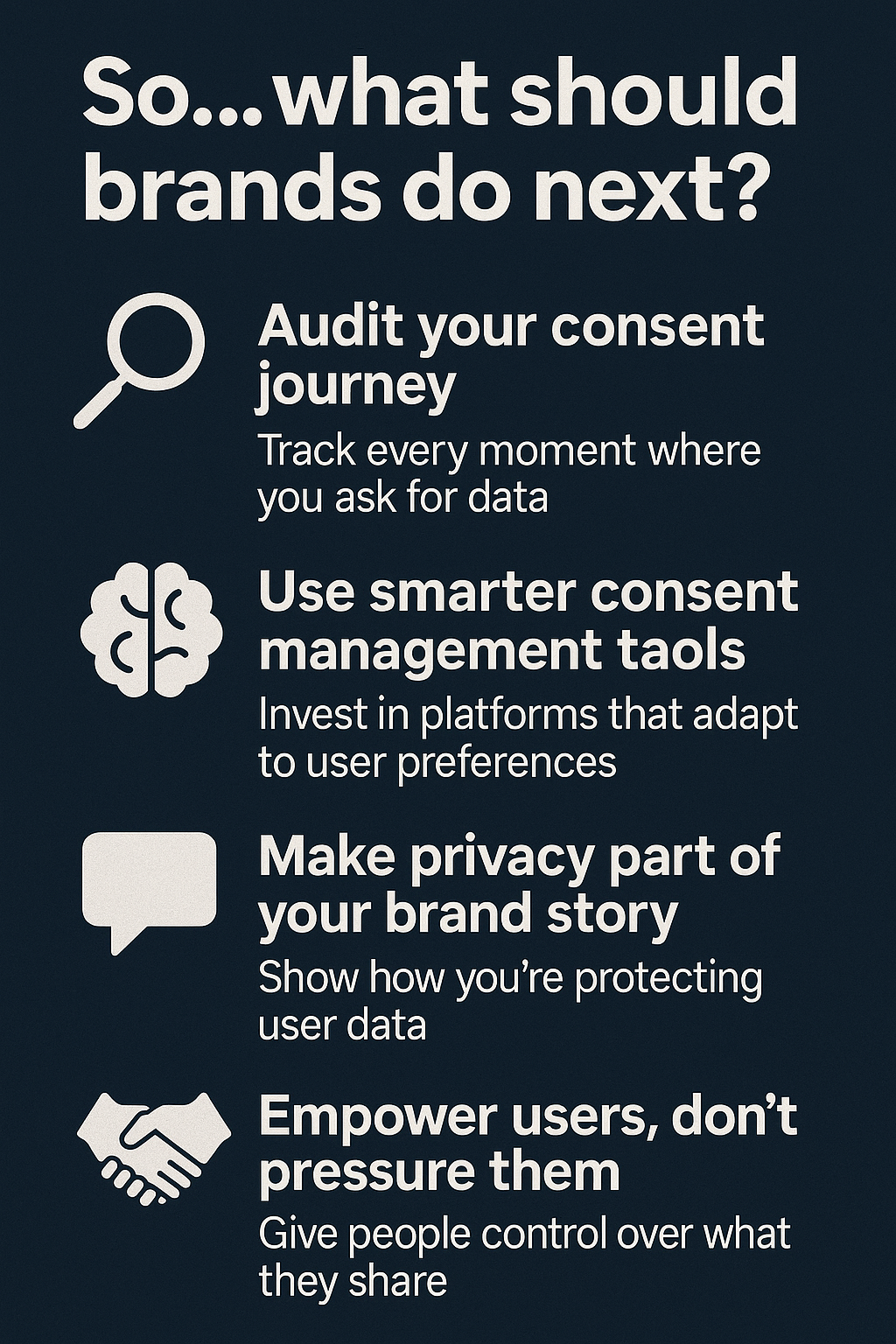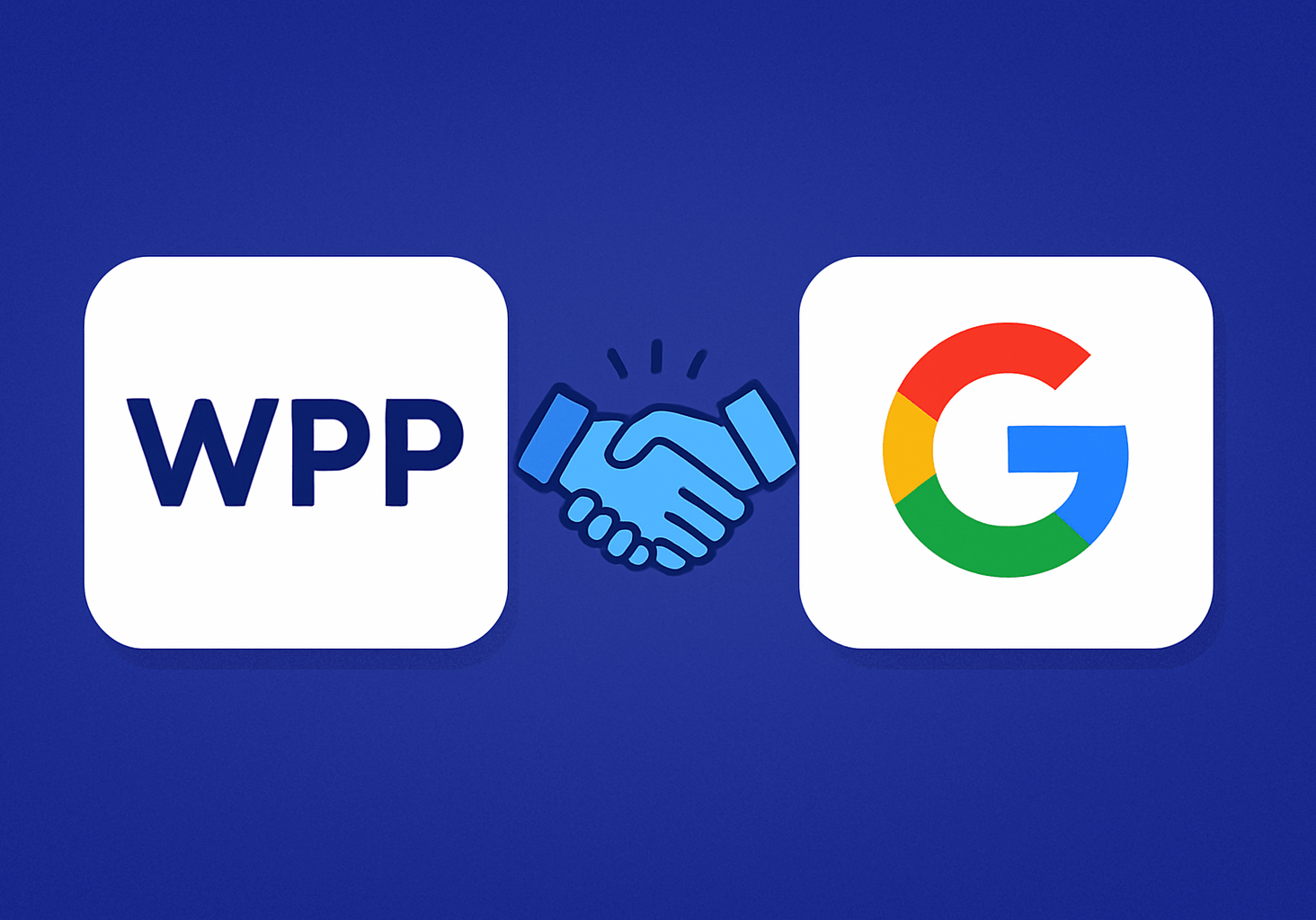
Why Consent Management is the Hottest Brand Move You’re Overlooking
Let’s be honest—nobody reads the cookie consent popups. You have seen them. You have clicked “Accept All” without thinking. Or maybe you have caught a glimpse of the “Manage Preferences” link somewhere on the poor design, and concluded it is better to opt out than in. But let’s face it: user consent has long been treated like the broccoli of the internet—technically important, but nobody really wants to deal with it.
Well, now you can.
Enter Consent 3.0—a new age of personal data permission that is no longer just a legal checkbox. It’s a baseline for privacy and data ethics, a core part of the brand experience, a trust signal, and a competitive advantage. And that comes down to smart, respectful, and effective consent management.
Wait, what even is Consent 3.0?
Consent 1.0 was simple. You signed up. You agreed. End of story. You didn’t think about it anymore; you didn’t have to read the fine print.
Then came Consent 2.0, with data privacy laws like GDPR and CCPA. Consent 2.0 opened the gates to a barrage of popups, checkboxes, and cookie banners, turning something so simple into an arduous task and leading to what we now call “consent fatigue.”
Now we’ve moved on to Consent 3.0, and that is a real shift in culture. Consent 3.0 is described as a respect for the user, where it is empathy-driven and prioritizes users, in full recognition that they are real human beings and not just simply data objects.
They are positive in nature as well as transparent and are based on trust. Consent 3.0 isn’t just asking for the user to obtain explicit consent to check a box; it is asking for an agreement to build a relationship.
Moving from compliance to competitive advantage
Let’s make one thing clear: managing user consent is now about more than just avoiding legal penalties; it is your opportunity to say to users, “We see you… we respect your consent choices.”
That is a huge turn from obligation to opportunity!
A Cisco study released in 2024 states that 81% of consumers indicated that their trust in a company is directly affected by how it processes personal data. And as we know, trust is the new currency of brand loyalty.
Subscribe to our bi-weekly newsletter
Get the latest trends, insights, and strategies delivered straight to your inbox.
So yes, consent management tools are now doing more than just collecting permissions; they are embedded in the consent management process and the overall customer experience.
Popups are dying—personalization is maturing
No one enjoys seeing a wall of checkboxes and confusing jargon. In fact, poorly conceived cookie consent banners are now being pointed out for “dark patterns.” Those sneaky UX tricks that elicit a “yes” when we may not mean it.
Consent 3.0 amplifies clear, contextual, and continuous communications. Abandon the one-time-only popups for real-time permissions:
- A streaming service allowing you to opt in to recommendation tracking only when you explore new genres.
- A retail app asking for geofence location access when you are at the store, not when you are downloading.
- A browser that nudges privacy-friendly actions only through a friendly means (sure, we see you, Firefox/Brave).
This is modern consent management – invisible when it needs to be and trusted when it counts.
The evolution of “privacy as UX”
Here’s the twist: data protection is now a design thinking.
Just as we obsess over brand color choices, typography, and load times, we also must design consent experiences that are human and user-friendly. Imagine this:
- A startup creates an incredibly clean onboarding flow, where users can select which data they want to share and why.
- A bank natively gives its customers an incredibly simple dashboard to toggle who can see what, and when.
- An e-commerce brand produces a delightful visualization of your entire data journey, highlighting aspects of transparency.
Consent management platforms like OneTrust, TrustArc, and Usercentrics are heading in this direction. However, the early adopters? They are leveraging permission as part of storytelling for their brands instead of using technology.
The real deal: Gen Z does not accept shady data activity
If you’re marketing to Gen Z (which let’s keep it real, you are), here is what you need to know. They really care about digital ethics!
They have lived through ad-tracking, algorithmic bias, and more data breaches to create pessimism than anyone could tolerate. So, if your brand still hides consent at the bottom of a webpage, or tricks users with vague darkness to get them to say ‘yes’, Gen Z will leave. Even worse, they will drag you on TikTok.
Consent 3.0 is your chance to stand out not only for what you sell, but also for how you interact with and respect the people buying from you.
The power of saying “No”
Here’s something weird: sometimes the best consent experience is when users say no, and you let them.
When a user refuses to allow tracking or data processing, and you deliver an exceptional experience after that. That is a win in your brand’s corner.
You signal “we value you as a person more than you as metadata.”
It is radical transparency. It is trust manifested in action. Often, trust produces the voluntary sharing of contextualized data at a subsequent point. Why? Because now, they want to engage.
Consent management = Culture management
Now here is the thing: Manage consent is not just a front-end problem. Consent is a backend opportunity as consent affects all parts of the business: marketing, sales, product, legal, and IT.
Consent 3.0 requires a culture of respect – this means educating internal groups, aligning staff across departments, and creating processes that enable privacy policies to be a shared value (not just another box to be checked in a compliance exercise).
Marketers will need to engage with product teams. Legal will need to learn the vernacular of design. And leadership will need to treat consent as a strategic asset and not a legal burden.
So…what should brands do next?
It’s time to evolve past pop-ups and create connections through consent. Here is what that looks like: meaningful, memorable, and really user-first.
- Audit your journey: Find every point you request consent…and then reconsider the ux. Is it friendly, clear, respectful?
- Use smarter tools: Invest in platforms that provide dynamic, contextual permissions…tools that treat users as collaborators, not captives.
- Make privacy part of your brand: Inform your audience and communicate how you are protecting their data. Make it central to your mission, a part of your campaigns, and your identity.
- Empower users, don’t pressure them: Give people control over what they share. Make it easy to opt in, easy to opt out, and easy to change their minds.

Cut to the chase
In the data chase, the real winners will be the brands that do not chase data. Consent 3.0 is not about loopholes, but it is about building loyalty through clarity and respect. When people feel seen, heard, and in control, they stay. They become advocates. They trust you. And trust is worth a thousand data points in an ad-fatigued, data management-suspicious world.


